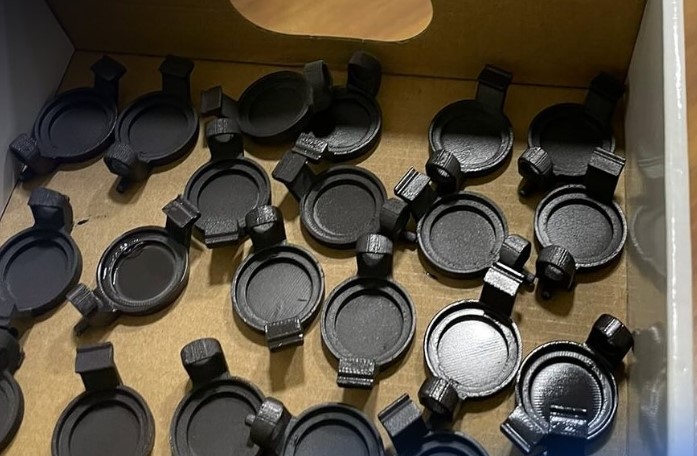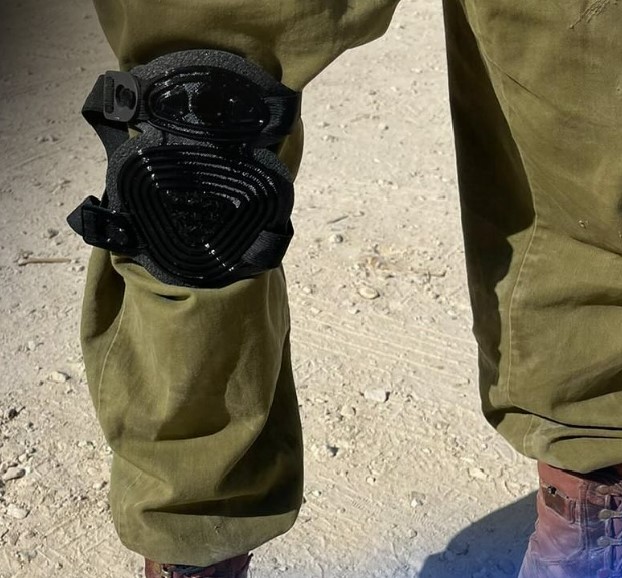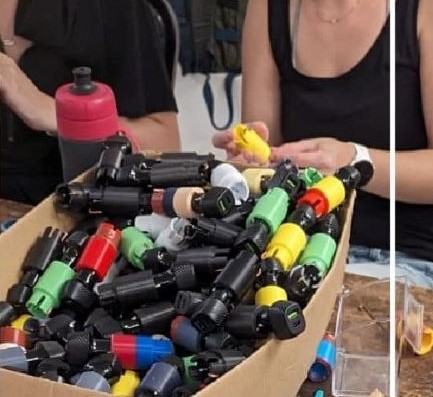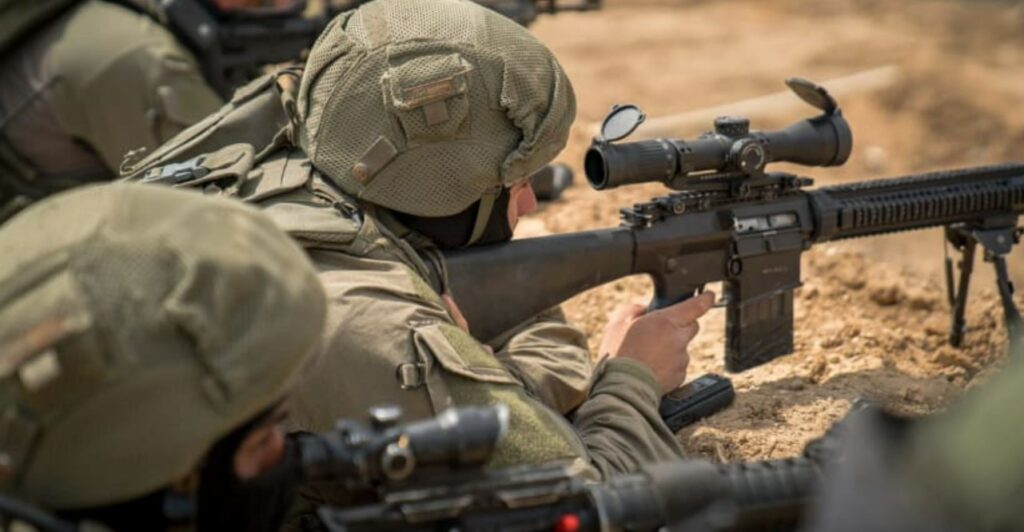An engineering student has a solution to the shortage of certain equipment for Israel Defense Forces soldiers – he prints it in 3D. And so far, he has produced tens of thousands of items for the troops.
When Palestinian terror group Hamas rampaged through southern Israel on October 7 last year, brutally murdering 1,200 people and kidnapping hundreds more to Gaza, it became clear to those with a military background that this was a declaration of war.
Indeed, Israel immediately called up 360,000 reserve soldiers, with so many dashing home from the four corners of the globe that special flights were laid on. And as well equipped as the Israel Defense Forces is, there were nonetheless gaps in equipment as the hundreds of thousands of emergency troops scrambled to their units.

Ariel Harush, who is in his final year of a materials engineering degree at Ben-Gurion University of the Negev and working as an research and development engineer at HP, soon found himself on the front line of a serious endeavor to supply the missing kit.
Rebuffed by his army commander when he tried to enlist for reserve duty on October 7 (he was told there were already too many reporting for duty), Harush, whose family hails from the communities bordering the Gaza Strip, was determined to do something to help the war effort.
“Unfortunately I know a lot of people who are not with us today,” he tells NoCamels.
“I was devastated because I wanted to help the country in some way. But I couldn’t find how.”
Pondering his position, he spoke to a friend who had been called up, who told him he needed a connector – a small part for his army radio that he could, if necessary, fashion out of a bottle cap. But Harush had a better idea.
“We printed a version of the radio connector and it worked well. I mean, it’s better than a Coca Cola cap,” he recalls.
“It was just a small thing I could help with,” he says, “engineered specifically to the need.”
The next day, Harush was inundated with calls from IDF commanders who had heard about the connector he’d printed and wanted some for their own soldiers.
“I understood then it’s going to be something bigger,” he says.

Harush quickly set up a WhatsApp group for friends with 3D printers who could help him in this new endeavor, dubbed 3D4IL, as the requests for the radio connectors kept coming.
“I think it took one day to print 1,000 pieces of this tiny device,” he says. “After one day, we shipped the 1,000 pieces.”
Four months on, Harush and his collection of volunteer printers have produced 43,000 pieces of 20 different items, ranging from the connectors and battery attachments for military vehicles to knee pads and night-vision adapters for rifles.
None of the items they produce are actual armaments, but do make the soldiers’ lives much easier.
The network of volunteers, now numbering around 400, are spread across the country. Most design and print the devices requested, while others ferry the raw material and finished products back and forth, until the printed items reach the soldiers who need them.
“It’s very dynamic, because we are all volunteers without pay,” Harush explains. “One day, we can print 100 products, the next day three products and a week later 500 products.”
Sign up for our free weekly newsletter
SubscribeWith the sheer number of requests from troops for printable pieces, Harush realized that operating through a WhatsApp group was no longer sustainable, and created a form in Google Sheets (the company’s version of Microsoft Excel) for requests to be processed.
“Everything we develop is needed in the field and came from a request,” Harish says.
“If we have the product already in manufacturing, I deliver the request to my volunteers, and they will open the request,” he explains.
“Once the request is ready, a delivery guy picks the product up from the printer guy, and delivers it as far as he can get.” The products then pass from person to person until they reach the front and the soldiers who requested them.

When a request comes in for an entirely new product, Harush gathers his R&D experts together and if they decide it is worthwhile printing the device, they devise a way to do so.
“If someone asks for a gun, I don’t think we will be able to provide it,” he says.
What the team has recently begun printing, however, is an eye protector for a rifle scope. The team started to produce this small device after Harush met up with a school friend who had been serving on the northern border with Lebanon and who had a nasty black eye.
The friend, an IDF sniper, explained that the recoil of his gun as it was fired would cause the scope to smack against his eye and leave him with facial bruises. The team developed a device for the scope to help reduce the impact of the recoil, and printed around 3,500 of them.
Another recent device 3D4IL has produced for snipers is a mesh cover for the lens in the scope, so that it cannot reflect any light to give away the soldier’s position.
“This is a product that exists in the world that a lot of companies are selling,” Harush says. “But right now you can’t get it. If you want it, you need to wait two months until Amazon sends it to you.”
Furthermore, the purchase price for such an item is around $6, while 3D4IL can make it for a fraction of the cost.

The project operates entirely on donations, with most of the funding coming only from Israel. Donations are made through a PayPal account and all the funding goes directly to producing the items the soldiers need.
“If I want this project to keep living and keep helping soldiers, I need to bring material to people to print,” Harush says.
“All I do is call everybody I know and tell them: ‘I manage this project and I need one dollar to help one soldier to be more operative in the field.’ We count on the goodness of people to help us.”
Despite the wealth of existing requests and the struggle to keep finding funding, Harush is still calling on soldiers to reach out to his group for anything that they need, and 3D4IL will try to help. They can reach him by calling +972 546 224 717 or emailing 3d4israel@gmail.com.
The group is not officially affiliated with the Israel Defense Forces, and while Harush says such an alliance would be good for their efficiency, he is content to play his part with the current status quo.
“As long as it helps someone,” he says, “this way is also good.”
Related posts

Editors’ & Readers’ Choice: 10 Favorite NoCamels Articles

Forward Facing: What Does The Future Hold For Israeli High-Tech?

Impact Innovation: Israeli Startups That Could Shape Our Future




Facebook comments